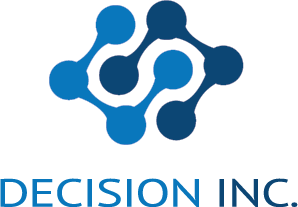BLOG | GENERATIVE AI
Framing The Risk Discussion for GenAI
In the rapidly evolving landscape of Generative Artificial Intelligence (GenAI), understanding and managing associated risks is crucial for enterprises. This article delves into three fundamental risk categories—Ethical, Accuracy, and Economic—outlining their nature and providing a structured approach for framing these discussions within an enterprise.
Ethical GenAI Risks
Nature of Risk: Ethical risks in GenAI encompass issues like bias, privacy violations, and misuse of technology. These risks can lead to reputational damage, legal challenges, and societal harm.
Framing the Discussion: Enterprises should agree on an ethical framework to guide discussions on risk management. The Australian AI Ethics Framework is an apt example, emphasizing human, social, and environmental well-being, respect for human rights, fairness, privacy protection, and accountability.

Action Points:
Establish an ethics committee or task force.
Regularly review and update the ethical framework to align with evolving societal values and legal standards.
Implement training programs on ethical AI use for employees.
Accuracy Risks of GenAI
Nature of Risk: This involves the potential inaccuracies in AI-generated outputs, leading to flawed decision-making or operational inefficiencies.
Framing the Discussion: Understanding the current processes and their inherent accuracy levels is essential. This should be followed by a gap analysis using emerging accuracy frameworks and Service Level Agreements (SLAs) to define acceptable accuracy levels.
Action Points:

Conduct a thorough analysis of existing processes and their accuracy.
Set clear accuracy benchmarks and review periods.
Develop a methodology for ongoing accuracy assessment and a process for remediation when discrepancies arise.
Economic Risks of GenAI
Nature of Risk: Economic risks relate to potential financial losses due to misunderstanding cost drivers and managing consumption risks in GenAI solution deployment.
Framing the Discussion: A clear understanding of the cost implications of GenAI solutions is crucial. This includes identifying hidden costs like data preparation, model training, and ongoing maintenance.
Action Points:
Conduct a comprehensive cost-benefit analysis before implementing GenAI solutions.
Monitor and manage ongoing costs, ensuring they align with budgetary constraints and deliver expected value.
Regularly review and adjust the GenAI strategy to prevent financial overruns.
Conclusion
Successfully integrating GenAI into enterprise operations requires a structured approach to risk management. By establishing clear frameworks for ethical, accuracy, and economic risks, organizations can ensure they are prepared to harness the benefits of GenAI while mitigating potential drawbacks. This proactive approach is essential for staying ahead in a world increasingly driven by AI innovations.
Read More
Who Should Take the Lead in Responsible AI?
BLOG | GENERATIVE AIWho Should Take the Lead in Responsible AI? The AI arms race is in full swing, but one question remains unanswered: who’s responsible for making sure it doesn’t go off the rails? Should governments set the rules? Should AI labs embed responsible...
“Is the AI ‘bubble’ about to burst or just starting? ”
BLOG | GENERATIVE AI“Is the AI ‘bubble’ aboutto burst or just starting? ”Artificial Intelligence is everywhere. From boardrooms to tech conferences, AI is the shiny new toy that has almost everyone energised. Yet some people are starting to tune out. After all, how...
“A ship is safe in harbour, but that’s not what ships are for.”
BLOG | GENERATIVE AI“A ship is safe in harbour, but that's not what ships are for.”The same is true of your data! Reimagine this quote in the modern world where your data is the ship, and the ocean is the market you want to dominate. AI can be your map of exploration....



